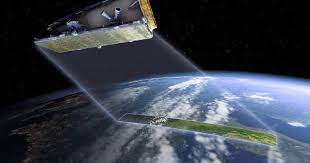The Synthetic Aperture Radar In Space Sector Market is expected to reach USD 4 billion by 2024.
According to a new study report the Synthetic Aperture Radar In Space Sector Market is expected to reach USD 4 billion by 2024. Earth observation, weather monitoring, biomass measurement, space exploration, and ocean monitoring applications for remote sensing technologies are likely to create a considerable growth opportunity for Synthetic Aperture Radar In Space Sector Market. Furthermore, the ability of these systems to operate successfully even in the absence of light and in overcast weather will unintentionally move the industry forward.
In 2017, Europe had the highest proportion, and by 2024, it is predicted to surpass USD 2 billion. The high number of projects in Russia, Germany, the United Kingdom, and Finland can be attributed to this. Furthermore, the European Space Agency (ESA) has placed a strong emphasis on navigation, earth observation, research programmes, technology support, and situational awareness, all of which have aided the industry's expansion. According to the ESA budget for 2018, these operations received over 52% of the allocated budget money, propelling Synthetic Aperture Radar In Space Sector Market growth.
One of the primary trends gaining traction in the SAR in space sector industry is the growing commercialization of imagery data obtained by these satellites. The need to seize these economic prospects has resulted in a highly competitive environment among industry participants. For example, the US Department of Commerce (DoC) granted XpressSAR Inc. a licence to operate commercial and private space-based synthetic aperture radar sensing systems in October 2015. It was the first completely American-owned corporation to be granted permission to operate a four-satellite commercial X-Band radar constellation.
Throughout the forecast period, high development, deployment, and complexity in properly utilising the collected image data are likely to be the most significant growth inhibitors for the SAR in the space sector market. Furthermore, the enormous space footprint and heavy-weight construction contribute to the overall pricing of these satellite missions, which has a detrimental impact on industry growth.
To obtain a competitive advantage over their immediate competitors, industry participants are expected to place a greater emphasis on shrinking the size and weight of space borne radar systems and improving overall image resolution. In January 2018, for example, Iceye launched its first microsatellite with synthetic aperture radar and the ability to provide two and three-dimensional pictures. Over the forecast period, these technological improvements are expected to provide the Synthetic Aperture Radar In Space Sector Market with great growth possibilities.




Comments
Post a Comment